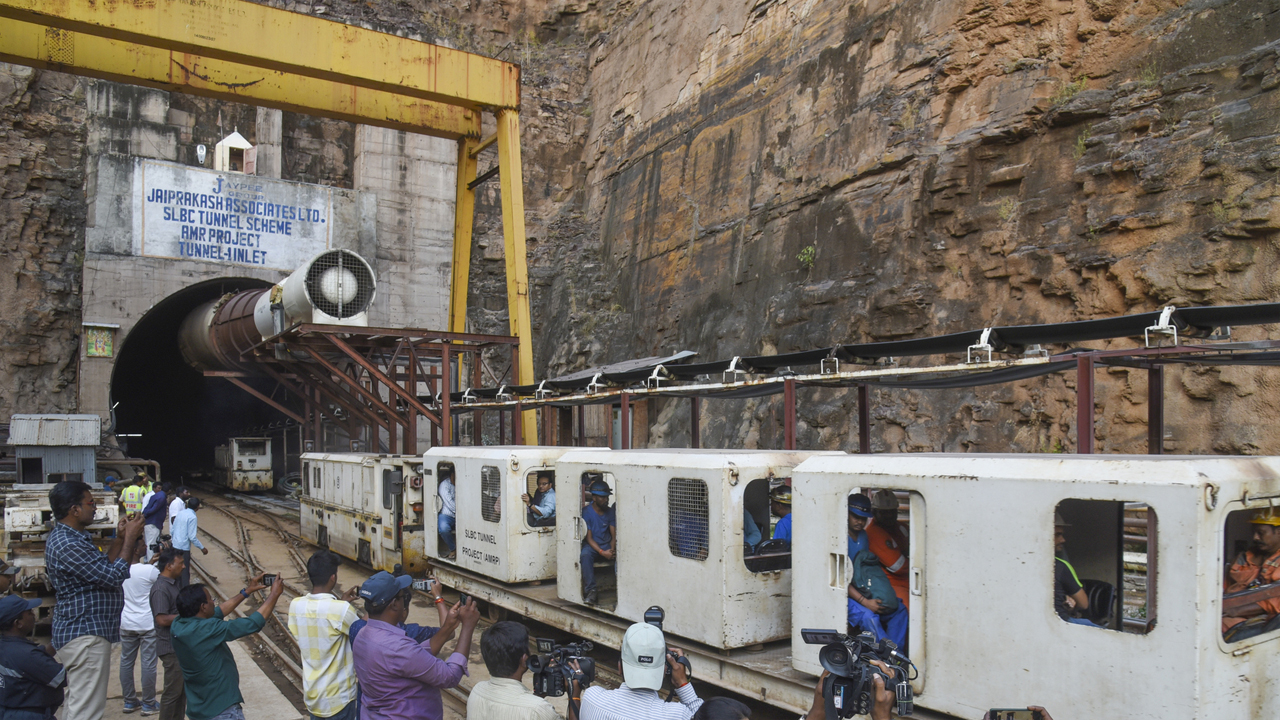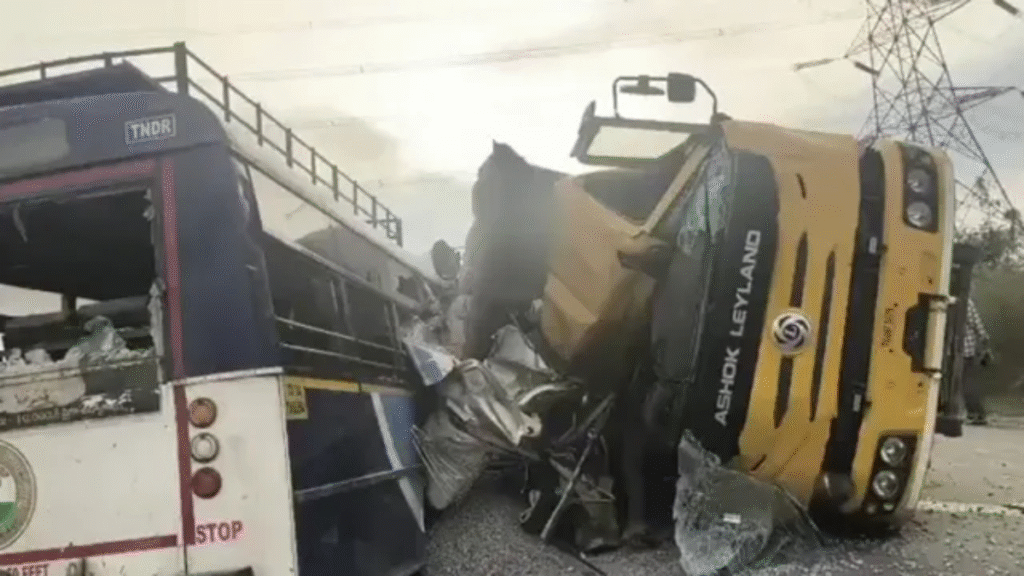Now Reading: Telangana Mulls SLBC Tunnel Extension to Fortify Against Future Flood Disasters
-
01
Telangana Mulls SLBC Tunnel Extension to Fortify Against Future Flood Disasters
Telangana Mulls SLBC Tunnel Extension to Fortify Against Future Flood Disasters

The devastating floods that recently ravaged parts of Telangana, exposing vulnerabilities in the state’s irrigation infrastructure, have prompted the government to explore a significant strategic shift. A key focus is now on extending the existing Srisailam Left Bank Canal (SLBC) tunnel as a robust, long-term solution to mitigate the risk of similar catastrophic events. This move signals a departure from relying solely on existing dam and reservoir capacities and emphasizes the need for enhanced water management and diversion capabilities.
The SLBC tunnel, currently designed to divert water from the Srisailam reservoir to drought-prone areas, is being considered for a substantial extension to increase its capacity and reach. The primary objective is to create a more efficient and reliable mechanism for managing surplus water, particularly during periods of intense rainfall and unprecedented inflows into reservoirs.
The Genesis of the Proposal: Learning from Catastrophe
The recent floods, triggered by torrential downpours, overwhelmed the existing water storage and release mechanisms, leading to widespread inundation and significant damage. The incident highlighted the limitations of relying solely on traditional dam management practices, especially in the face of increasingly unpredictable weather patterns attributed to climate change.
Officials are now acknowledging the necessity of a multifaceted approach to flood management, one that incorporates not only reservoir capacity but also robust diversion and conveyance infrastructure. The SLBC tunnel extension is being viewed as a crucial component of this strategy, providing a means to rapidly divert excess water away from vulnerable areas and prevent catastrophic downstream flooding.
Understanding the SLBC Tunnel’s Potential
The SLBC tunnel, in its current form, plays a vital role in providing irrigation water to several districts in Telangana. However, its potential for flood mitigation has become increasingly apparent. Extending the tunnel would enable the diversion of a significantly larger volume of water, effectively reducing the pressure on existing reservoirs and minimizing the risk of uncontrolled releases.
The extension would likely involve increasing the tunnel’s diameter and length, allowing for a greater flow rate. This would necessitate detailed engineering studies and environmental impact assessments to ensure the project’s feasibility and sustainability. The government is also exploring the possibility of incorporating additional intake structures and discharge points to enhance the tunnel’s flexibility and effectiveness.
Key Advantages of the SLBC Tunnel Extension:
- Enhanced Flood Mitigation: The primary advantage lies in its ability to divert large volumes of surplus water, reducing the risk of reservoir overtopping and downstream flooding.
- Improved Water Management: The extension would provide greater flexibility in water management, allowing for the strategic diversion of water to areas where it is needed most.
- Increased Irrigation Potential: The extended tunnel could potentially serve a larger command area, benefiting more farmers and contributing to agricultural productivity.
- Long-Term Resilience: By investing in robust infrastructure, the government aims to build long-term resilience against future flood events, minimizing economic and social disruption.
Challenges and Considerations:
While the SLBC tunnel extension holds significant promise, it also presents several challenges that need to be addressed.
- Engineering Complexity: The project involves complex engineering challenges, including tunnelling through challenging geological formations and ensuring the structural integrity of the tunnel.
- Environmental Impact: Careful consideration must be given to the project’s potential environmental impact, including its effects on water resources, ecosystems, and local communities.
- Financial Implications: The project is likely to require substantial financial investment, necessitating careful planning and resource allocation.
- Land Acquisition: Depending on the route of the extension, land acquisition may be required, which can be a complex and time-consuming process.
The Path Forward: Detailed Studies and Stakeholder Engagement
The Telangana government has indicated its commitment to conducting detailed feasibility studies and environmental impact assessments to evaluate the viability of the SLBC tunnel extension. These studies will play a crucial role in determining the project’s technical feasibility, environmental sustainability, and economic viability.
Furthermore, the government is emphasizing the importance of stakeholder engagement, including consultations with farmers, local communities, and experts. This collaborative approach is essential to ensure that the project addresses the needs and concerns of all stakeholders and contributes to the overall development of the region.
The decision to explore the SLBC tunnel extension reflects a proactive approach to flood management and a recognition of the need to adapt to the challenges posed by climate change. By investing in robust infrastructure and adopting a comprehensive water management strategy, Telangana aims to safeguard its communities and build a more resilient future.









